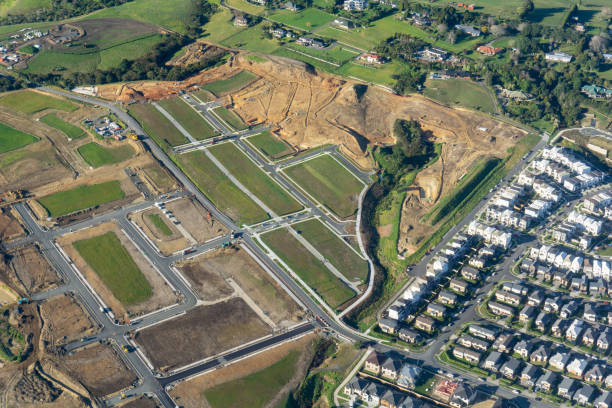
Three Main Types of Land Subdivision in NSW
Subdivision in New South Wales comes in several legal formats, each affecting ownership, responsibilities, and long-term management. The three key types—Torrens Title, Strata Subdivision, and Community Title—operate under distinct frameworks. Understanding how each works in practice is crucial for developers, planners, and owners alike.
Torrens Title
Torrens Title is the default system for free-standing properties. Each lot has its own title, registered with NSW Land Registry Services. There’s no shared land or infrastructure—everything within a boundary belongs solely to the lot owner.
However, when a Torrens subdivision mimics shared features (like common driveways in dual occupancies), the lack of formalised collective responsibility can create complications. Access easements, stormwater flow paths, and bushfire buffers must be accounted for in each lot individually, and any changes demand a new Deposited Plan.
While simple in appearance, Torrens subdivisions require careful site planning to ensure every lot functions independently—access, utilities, and landscaping included.
Strata Subdivision
Strata isn’t limited to apartments. Townhouses, duplexes, and villas can also be strata subdivided. Instead of land parcels, ownership is defined by the airspace inside a unit, with common property (such as walls, roofs, and driveways) owned collectively.
Strata subdivisions require a Strata Plan and must comply with strict fire safety, acoustic, and building code standards. Surveyors must clearly define the boundaries—especially in renovations or ownership disputes.
What sets strata apart is the owners corporation, which governs everything outside individual lots. Shared maintenance costs, dispute resolution, and building decisions are all managed collectively under strata law.
Community Title
Community Title is ideal for larger estates or lifestyle communities. Unlike strata, it covers individually titled lots (Torrens or strata) linked by shared land or infrastructure—like roads, recreation spaces, or private drainage systems.
Community schemes introduce community associations, which function like micro-councils. They maintain shared assets and enforce by-laws related to aesthetics, noise, or landscaping.
Larger projects may include layered structures—parent communities, precincts, and neighbourhood schemes—each with their own rules and budgets. Developers use this system to stage rollouts, but ongoing legal and financial responsibilities are shared across all owners.
Spatial Boundaries
Each subdivision type approaches space differently:
- Torrens: Traditional surveyed land parcels.
- Strata: Three-dimensional airspace subdivisions.
- Community: A hybrid—individual lots plus shared infrastructure overlay.
This affects dispute handling, insurance, and renovation approvals.
Planning and Legal Process
Each type involves different documentation and approval pathways:
- Torrens: Requires a Deposited Plan, with each lot assessed independently.
- Strata: Needs a Strata Plan post-construction, with holistic compliance.
- Community: Needs a Community Plan and Management Statement, including staging and by-law frameworks.
Legal instruments—easements, restrictions, and covenants—must align with the subdivision format. Access, drainage, and usage rights differ greatly across systems.
Council Involvement
Council responsibilities vary:
- Torrens: Assesses lots individually.
- Strata: Focuses on shared services during development.
- Community: Evaluates broader integration with transport, waste, and zoning frameworks.
The more complex the subdivision, the more strategic the planning review.
Management and Governance
Post-subdivision management defines long-term property function:
- Torrens: Self-managed by owners.
- Strata: Governed by an owners corporation with levies and meetings.
- Community: Managed by community associations with broader rules and obligations.
Community schemes can control design, garden styles, and even paint colours through their by-laws.
Staging and Flexibility
Strata and community schemes support staged development better than Torrens. However, they require careful coordination of infrastructure, plan updates, and consistent management structures over time.
Conclusion
Torrens, Strata, and Community Titles reflect different legal and practical models for land use. Choosing the right type involves more than layout—it shapes governance, cost-sharing, and future adaptability.
Whether you’re a developer or an owner, understanding these differences is key to avoiding future disputes and ensuring your property operates within the law.
If you are ready to start your land subdivision in NSW, feel free to contact us to see how we can help you making your project come true.




